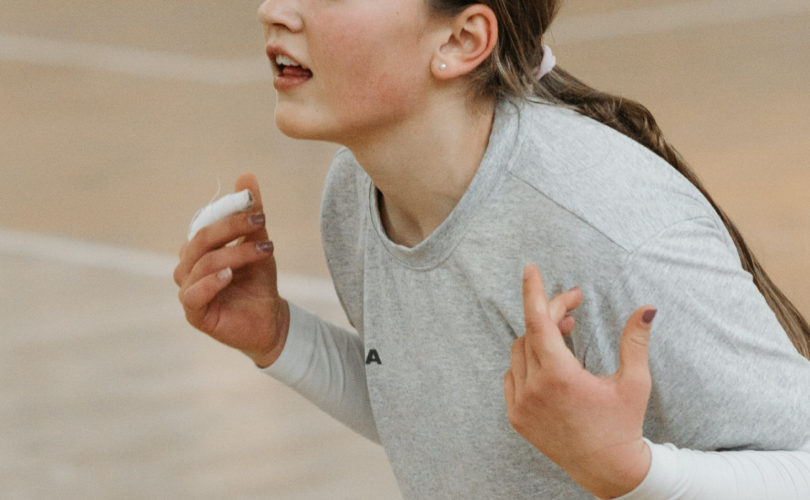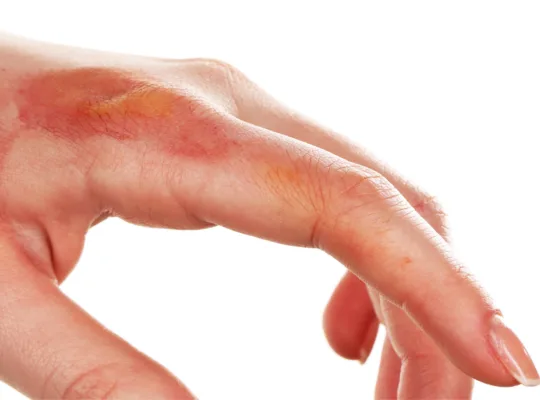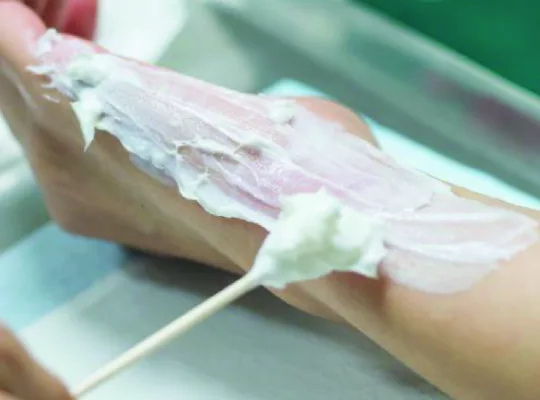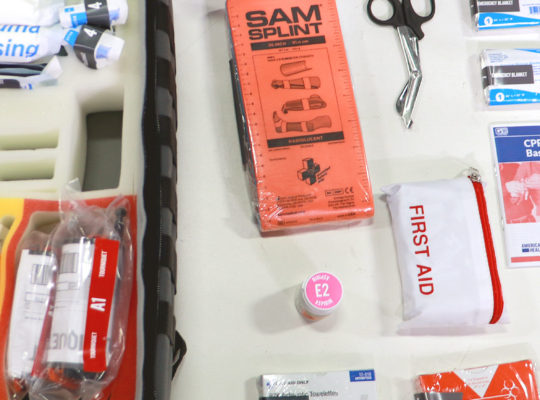Medical adhesive tape is a common and versatile tool used in first aid. Doctors, athletic trainers, and EMTs all use some form of medical or athletic tape roll.
Note: The terms athletic tape and medical tape can be used interchangeably in most situations. It is more common for medical tape to be narrower than athletic tape, but that isn’t always the case.
One of the most common uses of medical tape is to hold a dressing on a wound to help it heal. Gauze is placed over the wound and then held in place by taping the gauze directly to the skin. The gauze can also be covered by a secondary dressing, which will then be taped down. This is very helpful for moderately or heavily bleeding wounds. The gauze and dressing absorb the blood, and the tape helps keep pressure applied and keeps everything from moving.
Medical tape is also called athletic tape because of its prevalence in sports medicine. Athletic trainers and orthopedic doctors will wrap an injured joint or limb and protect the area by limiting motion. Athletes will commonly tape fragile parts of the body like joints, foot arches, and knuckles to prevent getting injured during practices or games.
Common Types of Medical Tape
Zinc oxide tape is commonly used by athletic trainers because it has high tensile strength and the adhesive won’t dissolve in sweat. These tapes provide the most resistance and will most often be used after an injury instead of before.
Cohesive elastic bandages are self-adherent, so they can be worn for long periods of time and be reapplied regularly without irritating the skin. Depending on the location, elastic bandage or stretchable bandages may need to be secured with medical tape.
Stretchable bandage tape is made of an elastic-cotton blend, which provides gentle support and breathability to the taped area.
This tape has high tensile strength like Zinc Oxide tape but has a weaker adhesive and is more porous and breathable, unlike other non-porous tapes.
- Pre Wrap
Pre-wrap is a self-adhering foam wrap that goes between the skin and tape. It prevents irritation, increases breathability, and adds an extra layer of padding and protection.
For more information about how to treat injuries that might require the use of taping, you should consult an athletic trainer or your doctor. You can also use waterproof tape if you encounter water on a daily basis. Waterproof tapes create a layer over the tape and prevent water from reaching the wound.





